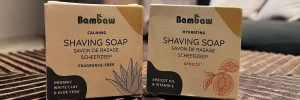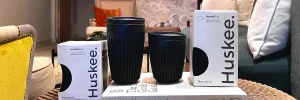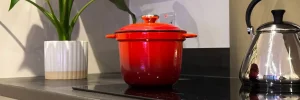
my final take
Brilliant Kone Induction Kettle Review – Le Creuset
Pros
- High-Quality
- Heat-resistant phenolic plastic
- Effective Whistle
- Works on all stovetop types
- Fast boiling
Cons
- No internal Filling markings
- Max fill lower than expected
My Honest Review of the Le Creuset Induction Kettle
My review of the near-perfect Le Creuset Stainless Steel Induction Kettles.
After 8 years of using an induction tea kettle, In my opinion, everyone should switch. They are simple to use and last for years which helps to avoid waste attributed to the planned obsolescence of electric kettles, all while being the most efficient way of using electricity to heat water for your morning cup of tea.
The stainless steel Le Creuset Induction Kettle is the best of the bunch , but after having one for several months, some things could be improved.
I cover everything from the pros and cons of induction to my detailed guide on what you should look for when purchasing a tea kettle for your induction cooktop.
Continue for my full review and your general whistling kettle guide.
Note: Only the the larger 2.1 Liter size of my kettle is available in the US.
Other Reviews You Might be Interested in
Le Creuset Kettle
The Kone Kettle is the smaller of the tea kettles offered by Le Creuset.
There are also enameled carbon steel variants of both sizes with the vast array of colors you would expect from Le Creuset. Available in the style of traditional kettles and the more modern Kone design I am reviewing.
This whistling kettle ticks for all the features of my buying guide and hits the sweet spot of quality, simplicity, and function. Although it does come with a hefty price tag.
Positives
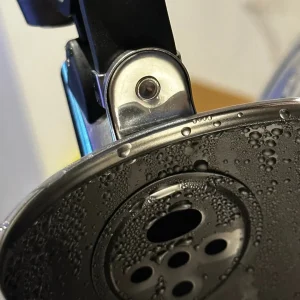
High-Quality:
Anti-warp, 18/10 stainless steel makes this kettle durable and should not corrode even when used with acidic water.
The polished mirror finish is susceptible to minor scratches from washing and use, but I haven’t found this to be an issue.
Heat-resistant phenolic plastic handle and whistle:
The two parts that require contact are made from phenolic plastic to avoid burns. This reduces heat transfer from the hot kettle and stays cool even when boiling. This enables the spout to be opened safely.
Ample Whistle volume:
The whistle is the ideal volume, easily noticeable but not uncomfortable to be around when boiling.
Easy to use:
Thanks to its simplicity, there is little to go wrong or fail. The lid is easy to remove for filling, although some reviews stated they struggled. The kettle pours easily, does not drip from the pour spout, and the weight/size is ideal for an average home.
Works on all stovetop types:
Due to its construction, this tea kettle is also suitable for gas, ceramic, or standard electric stovetops. This gives flexibility should you move home.
Fast to boil water:
Due to the solid base, this kettle can be used on our most powerful 3700 watt hob ring although due to the diameter it is best suited to the 3100 watt hotplate. The below boil speed tests show the time to boiling point for 1 little from room temperature as well as 1 Cup.
| Quantity of Water (Liters/Cup) | Induction Hotplate Power (Watts) | Time to Boil Water (Seconds) |
|---|---|---|
| 1 Liter | 2200 Watts | 200 Seconds |
| 1 Liter | 3100 Watts | 140 Seconds |
| 1 Liter | 3700 Watts | 130 Seconds |
| 1 Cup | 2200 Watts | 75 Seconds |
| 1 Cup | 3100 Watts | 55 Seconds |
| 1 Cup | 3700 Watts | 47 Seconds |
Negatives
No internal Filling markings:
Although we use the weight to judge how much water is in the kettle, a filling granulation on the inside would be helpful.
Max fill lower than expected:
The maximum fill level is relatively low on the kettle. This is to avoid water being forced out of the spout when boiling. It does make the kettle rather large for the maximum 1.6 Liter quantity it can boil.
Why use an Induction Kettle?
There are three main reasons these stovetop models should be the norm.
Firstly, they are ultra-efficient, using up to 90% of the energy consumed to to make hot water. Comparatively, a typical electric kettle is about 74%, and a stove kettle on a gas stove is about 40%. [1]
Top Tip: Technically there is no minimum filling level as with many electric element kettles. This means if you only need 1 cup of water boiled, just fill the kettle with one cup. This saves significant energy.
Note: Never heat the kettle empty, as this may damage the kettle’s base!
Secondly, from my experience, regular electric kettles break, which could be primarily due to planned obsolescence by manufacturers. This means many electric kettles are not designed to last, lasting on average only 4.4 years, bringing the customer back repeatedly. Meanwhile, A good quality induction kettle should last for many years. I have used one for over 8 years, which is as good as the day I purchased it. This is because there really isn’t anything to go wrong.
Finally, by avoiding planned obsolescence, using fewer materials, and simplicity, they are much easier to recycle if they do eventually need to be disposed of. This is more sustainable as fewer will be used for a given number of years.
Not all is perfect in the world of induction kettles. The one drawback I have found is when you need to boil the kettle if making tea, it can interfere if cooking on some induction stoves. Due to the large power requirement, it can require turning down or even off some hot plates during use.
As brilliantly simplistic as Induction kettles are, as always, there are factors to consider when deciding which induction kettle is suitable for you.
Ease of Use
A pillar of most purchases is the ease of use. From experience, I look for:
How easy is it to pour from? Does it drip? Is the auto-opening mechanism efficient?
How easy is it to fill? Is the filling point easy to open, and how easy is it to gauge the water in the kettle? There is generally no level gauge like you will find on an ordinary electric kettle.
Material
Kettle materials range from steel to powder coated stainless steel and metals, with the addition of various plastics for handles and, in some cases, even cork. Many kettle bases sandwich aluminum and iron to improve heating but do add significant weight to the kettle.
The material you choose for your induction kettle will come to personal preference. Still, I recommend high-quality stainless steel to avoid rusting, maximize the kettle’s life and enable more straightforward recycling when that time comes.
Plastics are hard to avoid but also are well suited. Phenolic plastic is used by Le Creuset help to reduce heat transfer, keeping handles from getting hot and safe to touch.
Avoid plastics containing BPA, particularly if in contact with the kettle’s contents.
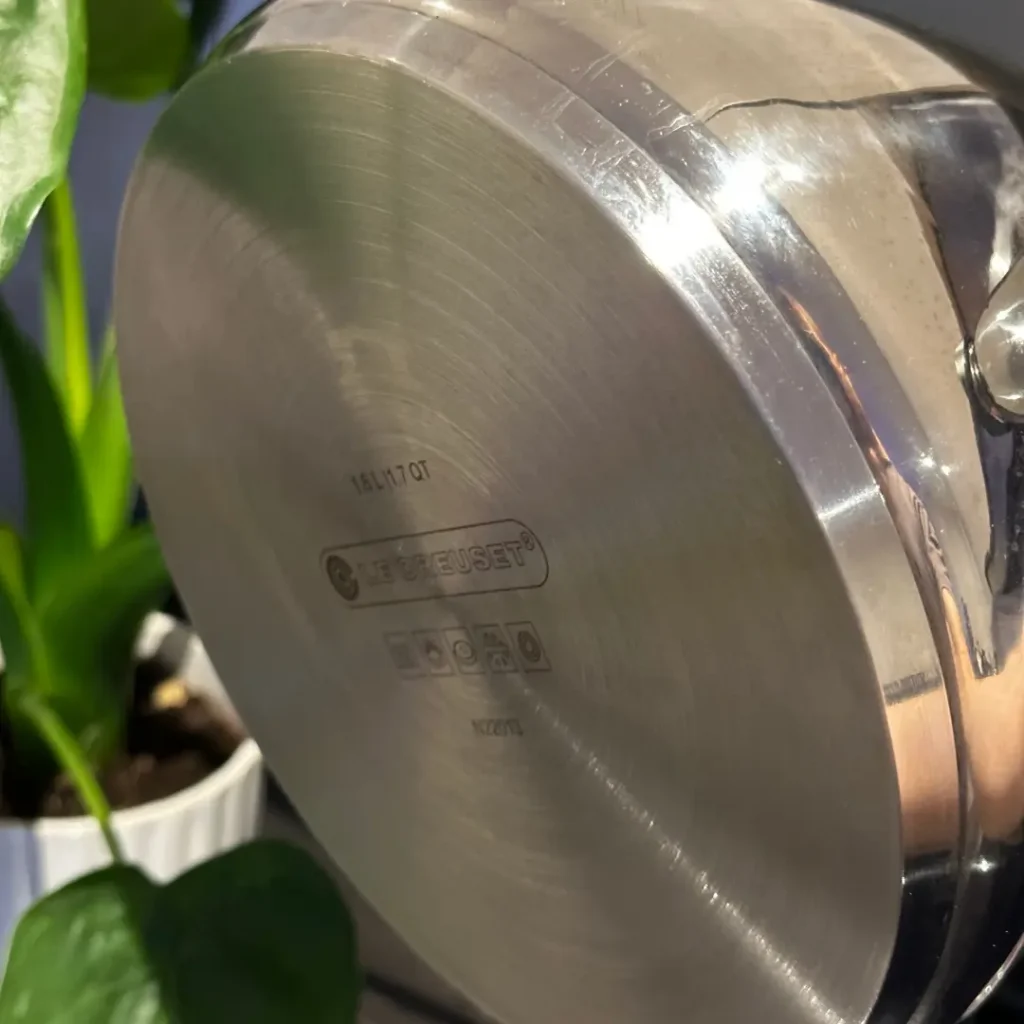
Versatility
Although rare, some stovetop kettles may work on induction, or at least not advertised as such, due to the base not being designed for that purpose.
Most kettles now work on any stove or hob type.
Just be aware that some induction kettles that incorporate plastic in the design may not last well if used on a high heat gas stovetop. Many reviews complain about this. Basically, user error, as plastic is known to melt.

Safety
When dealing with boiling water, there is always a risk of burns. To help mitigate this risk, choose kettles with good thermal-resistant handles and spout whistles if fitted.
Many now use self-opening spouts, but this also can be prone to failure due to design complexity, poor design, and planned obsolescence.
A manual spout works fine and can be safely opened if fitted with thermal-resistant material.
Noise
Whistling tea kettle noise can be looked at in two parts.
First, you have the noise from heating/boiling. This is the same as a standard electric kettle; boiling water makes noise. You will also have a slight hum from the induction on high load, maybe the cooling fan also, depending on the model of the induction hob.
Then you have the whistle, common among induction kettles. These vary widely in volume and can be very loud on full boil. This safety feature prevents the kettle from being forgotten on the induction hob.
Whistle material should also be considered. Metal internals should last longer and will not melt and degrade so readily if exposed to excessive heat.
Depending on your requirements, check customer reviews to judge the volume of the whistle.
Speed to boil
Firstly, the speed the kettle will reach boiling point depends on the KW output of the induction hob ring you use and the quantity of water in the kettle. Secondly, the construction of the kettle will affect how much energy the kettle can utilize from induction cooktops, the more energy, the shorter the boiling time. For example, a thin bottom kettle will unlikely work on the larger induction rings on high power.

Capacity
A critical factor in choosing your induction kettle will be the size. Bigger is only sometimes better. Remember, you must fit this on your induction hob with other pots and pans.
Appearance
This will come down to personal preference, but I recommend avoiding finishes that degrade quickly. Coatings on steel, for example, will chip and scratch, leaving your induction kettle looking old and worn. Following this, it will likely rust and, in time, need replacement.
Plain finishes on stainless steel kettles avoid this issue and will last many years. A brushed stainless steel also hides minor scratches particularly well.
Handle
Handles come in various shapes, sizes and materials. Obviously, you want a kettle handle that won’t burn you, will last well and is easy to hold/grip. Phenolic plastics are found in many premium kettles, but my favorite is Oxo’s rare but brilliant cork handle.
Le Creuset Kettle Models
I have only covered the stainless steel models here as they are the best for long life. Both models are also available in a range of colours but these are carbon steel and may not not last as well according to reviews. My advice is stick with stainless steel.
compact Size
Stainless Steel Kone Kettle
Compact Modern Design
Induction Suitable, Heat Restant Handle and whistle
1.6 Liter Capacity
Best capacity
Stainless Steel Traditional Kettle
Large Traditional Design
Induction Suitable, Heat Restant Handle and whistle
2.1 Liter Capacity
Wrapping Up
Overall, the flaws I highlighted in the Le Creuset Kone Kettle are minor and, in general, not a concern.
The kettle is well built, feels and looks great, and should last more than its 5-year guarantee. Perfect to brew tea or pour over coffee in the morning.
Its lack of spout mechanism and simplicity is a bonus in avoiding possible failure and planned obsolescence.
Note: Only the the larger 2.1 Liter size of my kettle is available in the US.

Induction Kettle FAQ
How do induction kettles work?
The induction hob uses an electromagnetic field and turns the kettle base into a heating element that directly heats the water.
This technology relies on the principle of magnetic induction, in which eddy currents are excited in a ferromagnetic cookware when in the presence of an oscillating magnetic field. [2]
How does a stovetop kettle avoid planned obsolescence?
Using fewer and simpler materials and avoiding common failure points like heating elements, planned obsolescence is generally avoided when a good quality product is purchased.
Do tea kettles work on induction?
Many metal kettles will work on induction hobs, but some will not. Check with the manufacturer for clarification.
Is induction more efficient?
Induction is the most efficient way to heat water. Using up to 85% of energy to heat the water.
Will a stainless steel kettle work on an induction cooktop?
Not all will, only special induction-compatible cookware made from stainless steel. If unsure, check with the manufacturer.





